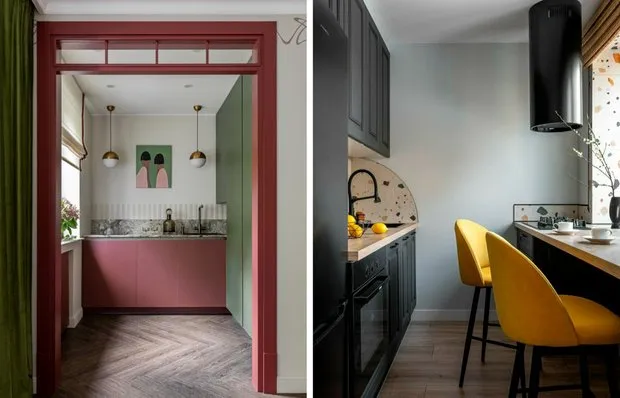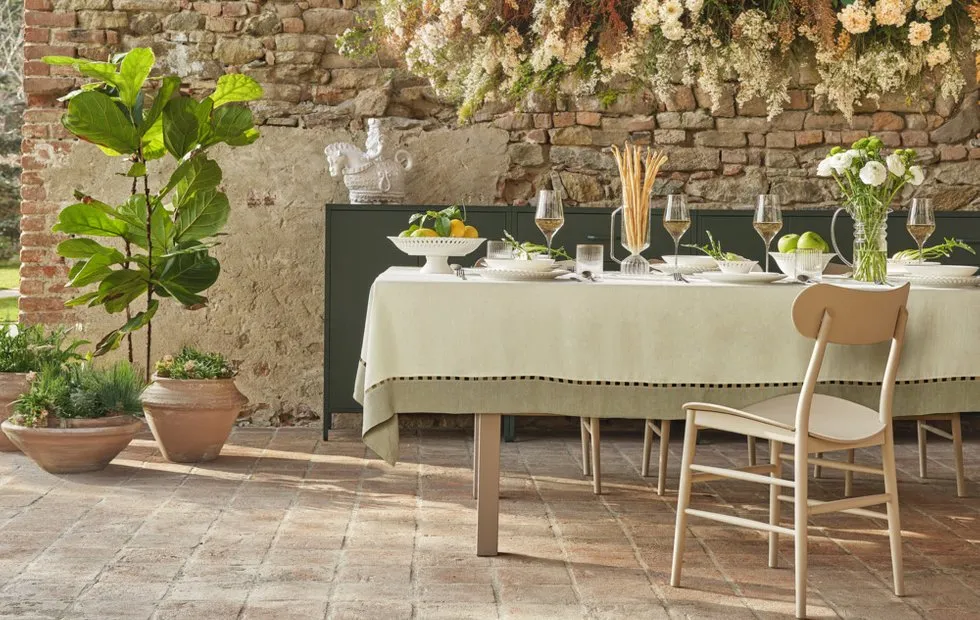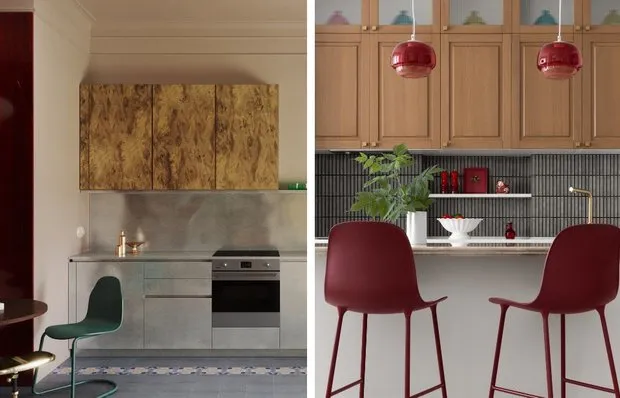There can be your advertisement
300x150
The Pashkov House: The Amazing Fate of Moscow's Most Elegant Building
And its interiors from imperial times to our days
It emerged as a challenge to the Kremlin: strict, heavenly, floating above Moscow, captivating with its perfection. The genius architect created it for a capricious rich man in the 1780s, and then began a real adventure lasting several centuries. "Behold, but do not enter" — it seemed to say to Moscovites for centuries. The Pashkov House survived fires, revolutions, wars and neglectful governance by authorities, to ultimately become a treasure of Russian culture. Even Woland from "The Master and Margarita" chose its roof for his last Moscow appearance — what could be more mystical an acknowledgment?
Main points of the article:
The Pashkov House is a masterpiece of Russian classicism, built in 1784-1786, presumably by architect Vasily Bazhenov;
The building changed owners and purpose: from a private mansion to the Nobility Institute and part of the Russian State Library;
The interiors of the building have undergone three major transformations: aristocratic, Soviet and modern after a large-scale restoration from 2003-2007;
The house houses unique book collections and manuscripts, including the Rare Books Department of the Russian State Library;
Views from its balconies are among the most stunning over the Kremlin and central Moscow.
How a Private Palace Became a National Heritage
Imagine 18th century Moscow: wooden houses, crooked streets, and suddenly — on the Vaganov Hill, opposite the Kremlin, a dazzling white building with columns, rotunda and a garden on three terraces emerges. This was a true architectural challenge. Captain-Ensign Petr Egorovich Pashkov, son of a palace servant of Peter I and a colossal rich man, decided to humiliate all Moscow nobility.
For a long time it was believed that the building was designed by Vasily Bazhenov, although no documentary evidence has survived. The style of construction speaks clearly: it is a high-grade Russian classicism. A three-story mansion with a belfry, crowned with a dome, seemed to float above the city. A luxurious garden descended terraces to Moika Street, and fountains trickled in grottos and pavilions.
After Pashkov's death in 1790, the house was inherited by his son, but the real history of the building had only just begun. In 1812, during the Moscow fire, the interior of the house was severely damaged. The heirs sold it to the state, and in 1843, the Nobility Institute moved there — an educational institution for children of nobles.
In 1861, the building became part of Rumyantsev Museum, where the library, art gallery, collection of antiquities and ethnographic museum were housed. It was from this moment that its "bookish" fate began, defining the future for centuries to come.
 pinterest.com
pinterest.comInteriors Seen by All: From Balls to Library Catalogs
The original interiors of the Pashkov House were almost entirely lost — the fire of 1812 destroyed most of the furnishings. But from descriptions by contemporaries, we know that they were breathtaking: cornices, mirrors, parquet, silk wallpapers, Chinese vases and Venetian chandeliers. The grand staircase was made of Carrara marble, and in the ballroom up to 100 pairs could dance simultaneously.
After the transition to the Nobility Institute, interiors were redesigned: classrooms and a fencing hall appeared, as well as a chapel. When the building was transferred to the Rumyantsev Museum, it was restructured again — now for library and various collections needs.
The Soviet period brought its changes. In 1921, the Rumyantsev Museum was disbanded, and the building fully came under the control of the State Library of the USSR named after V.I. Lenin (now the Russian State Library). The building housed the Rare Books and Manuscripts Department. Interiors took on a strict, utilitarian look with typical Soviet long tables and shelves.
The real revival of the historical appearance occurred only in 2003-2007, when a large-scale restoration was conducted. Restorers recreated the grand staircase, restored the plastered ceiling and wall décor, restored parquet floors and marble fireplaces. Special attention was paid to the famous belfry with a circular view of Moscow.
Mysteries and Myths of the Magnificent Building
There are many legends connected with the Pashkov House. One claims that Bazhenov, offended by Catherine II for rejecting his project for the Kremlin Palace, designed the house so that the owner sitting in the belfry could literally "look down from above" onto the imperial residence.
Another legend concerns underground passages. It was said that secret tunnels led from the Pashkov House to the Kremlin and the Moscow River. During archaeological work, underground communications were indeed discovered, but they turned out to be nothing more than remnants of an 18th-century drainage system.
During the Soviet period, rumors abounded about secret storage areas under the house where supposedly banned books and manuscripts were kept. In fact, special collections did exist, but they were mainly located in the main building of the library.
The literary fame of the Pashkov House was brought by Mikhail Bulgakov. In the finale of "The Master and Margarita," it is on the roof of this very building that Woland and his entourage bid Moscow farewell. There is a theory that the writer chose this location due to its position between earth and heaven — as a symbol of transition between worlds.
The Pashkov House Today: Accessible Luxury and Cultural Value
After the restoration, the Pashkov House became one of Moscow's gems. Today, it houses the Department of Manuscripts and the Rare Books Department of the Russian State Library. Its collections include unique editions, manuscripts, maps, and engravings. Among the treasures are the first printed "Apostle" of Ivan Fedorov, manuscripts by Pushkin, Gogol, and Tolstoy.
Concerts of chamber music, exhibitions, and cultural events are held in the restored halls. Special demand is for tours with access to the belfry, offering a breathtaking view over the Kremlin and central Moscow.
The restored interiors are impressive in their sophistication. The grand hallway on the second floor was recreated based on historical examples: plastered cornices with gilding, parquet flooring, marble fireplaces, crystal chandeliers. Particularly impressive is the Oval Hall with its domed ceiling and acoustics allowing one to hear whispers from the opposite end of the room.
 Photo: pinterest.com
Photo: pinterest.comFrom Decline to Revival: Restoration as a Second Birth
By the beginning of the 2000s, the condition of the building caused alarm. The foundation was sinking, walls were cracked, and white stone details were deteriorating. In 2003, a comprehensive restoration began, lasting four years and costing millions of dollars.
The works were carried out according to archival drawings and photographs. Restorers reinforced the foundation, restored facades, and recreated historical interiors. Special attention was paid to the famous dome, which was completely disassembled and reassembled. The unique mechanical clock in the belfry was also restored.
Parallel to this, modernization was underway: the building was equipped with contemporary climate control, fire suppression, and security systems. This made it possible to create ideal conditions for preserving rare books and manuscripts.
A separate task was the restoration of the garden. The historical layout was recreated based on engravings and plans from the 18th century. Terraces with fountains were revived, sculptures and vases returned, and the garden became a harmonious and elegant corner in the bustling heart of Moscow.
How the Famous House Became a Hero of Culture and Art
The Pashkov House appeared in works of art multiple times. Besides the mentioned "The Master and Margarita," it features in novels by Leo Tolstoy, works by Gilyarovskiy, and poems by Marina Tsvetaeva.
Artists of various eras captured this building on their canvases. Many art lovers know it from paintings by Alexei Savrasov, Vasily Polenov, and Apollinary Vasnetsov. The classical view of the house with the Kremlin embankment became one of the symbols of old Moscow.
In cinema, the Pashkov House also became a filming location several times. Scenes from films like "War and Peace," "Doctor Zhivago," and the TV series "The Master and Margarita" were shot here. Directors were attracted not only by the beauty of historical interiors but also by the symbolic meaning of the building as a bridge between epochs.
Today, the Pashkov House is not just an architectural monument or a library. It is a place where the past meets the present, where history comes alive and continues. Entering here is not easy — it requires advance booking for tours or special reader tickets. But those who were fortunate enough to visit these halls carry away a piece of the unique atmosphere created by the architect's genius and the careful hands of restorers.
Throughout its long history, the Pashkov House was a noble nest, an educational institution, a museum, and a library. It burned in a fire, aged with time, and was reborn thanks to restorers. And today, looking at this architectural masterpiece, it is hard not to agree with Bulgakov who chose exactly this building for the final scene of his great novel. Here one truly feels the boundary between earthly and heavenly, between everyday life and eternity. And perhaps this is the main secret of Moscow's most elegant building.
 Photo: pinterest.com
Photo: pinterest.comFeatured: pinterest.com
More articles:
 How to Arrange a Tiny Kitchen in a Khrushchyovka: 5 Successful Examples
How to Arrange a Tiny Kitchen in a Khrushchyovka: 5 Successful Examples Best Finds for the Garden and Comfortable Outdoor Retreat
Best Finds for the Garden and Comfortable Outdoor Retreat 7 Signs of Poor Repair That Are Immediately Visible
7 Signs of Poor Repair That Are Immediately Visible 6 mistakes in organizing the wardrobe that you shouldn't repeat
6 mistakes in organizing the wardrobe that you shouldn't repeat Clearly Noticeable: 6 Signs of an Outdated Interior
Clearly Noticeable: 6 Signs of an Outdated Interior How to Save Space in a Small Apartment: 7 Simple and Effective Ideas
How to Save Space in a Small Apartment: 7 Simple and Effective Ideas 5 super solutions for relaxing on the balcony
5 super solutions for relaxing on the balcony 6 Ideas for Kitchen Apron Design That You'll Want to Implement
6 Ideas for Kitchen Apron Design That You'll Want to Implement